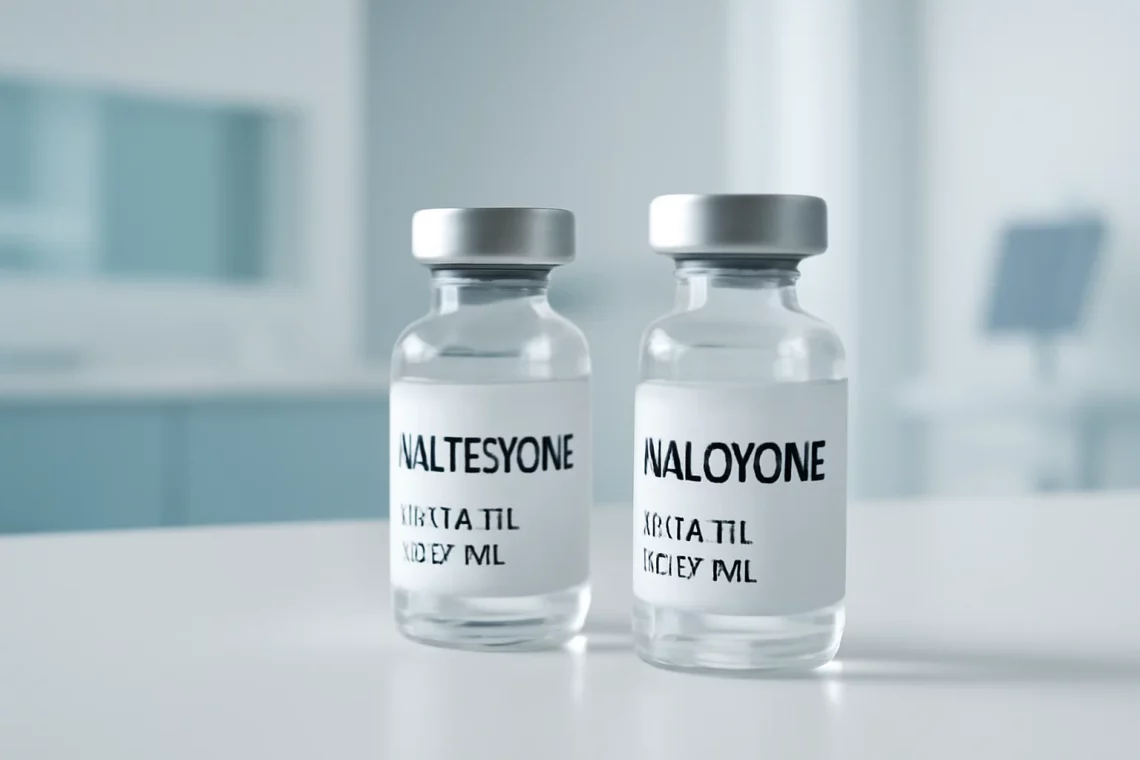
Naltrexone vs Naloxone: Understanding Their Differences and Uses
Naltrexone and naloxone are two medications that often come up in discussions surrounding addiction treatment and opioid overdose response. Both drugs belong to the class of opioid receptor antagonists, which means they work by blocking the effects of opioids in the brain. While they share some similarities, their uses, mechanisms, and effects differ significantly.
Understanding the distinctions between naltrexone and naloxone is crucial for healthcare professionals, patients, and families affected by substance use disorders. The opioid epidemic has made the need for effective treatment options and emergency responses more urgent than ever. As communities strive to combat addiction and reduce the number of opioid-related deaths, these two medications play vital roles. However, their administration, intended outcomes, and patient profiles differ markedly, leading to varying implications for their use in clinical settings.
In the following sections, we will explore the unique properties and applications of naltrexone and naloxone, delving into their mechanisms of action, therapeutic uses, potential side effects, and the critical contexts in which they are utilized. By examining these aspects, we hope to clarify the roles these medications play in the landscape of addiction treatment and emergency response.
Naltrexone: Mechanism, Uses, and Effects
Naltrexone is primarily used as a long-term treatment option for individuals struggling with alcohol and opioid dependence. Its mechanism of action involves binding to the same receptors in the brain that opioids target, effectively blocking their effects. This antagonistic action helps individuals avoid the euphoric sensations associated with opioid use and reduces cravings, making it easier to maintain abstinence.
The drug is typically administered in tablet form or as a monthly injectable (known as Vivitrol). When taken regularly, naltrexone has been shown to decrease the risk of relapse in patients with alcohol use disorder and opioid use disorder. By diminishing the reinforcing effects of these substances, naltrexone empowers individuals to focus on recovery and participate in behavioral therapies that can aid in their healing process.
It’s important to note that naltrexone is not a cure for addiction but rather a tool to support recovery. It is most effective when combined with counseling and support systems that address the psychological and social aspects of addiction. Patients who are considering naltrexone should be opioid-free for at least seven to ten days before starting treatment to avoid precipitating withdrawal symptoms.
While naltrexone is generally well-tolerated, it can cause side effects such as nausea, headache, dizziness, and fatigue. Additionally, since it blocks opioid receptors, individuals who relapse and attempt to use opioids may not experience the desired effects, which can lead to the risk of overdose if they consume larger quantities in an attempt to overcome the blockade. Therefore, education and awareness about naltrexone’s effects are crucial for patients and their families to ensure safe and effective use.
Naloxone: Emergency Response and Administration
Naloxone, commonly known by its brand name Narcan, is an essential medication used in emergency situations to reverse opioid overdoses. Unlike naltrexone, naloxone is designed for acute use and works rapidly to restore normal respiration in individuals who have overdosed on opioids. It is typically administered intranasally or via intramuscular injection, providing a quick and effective response to life-threatening situations.
The mechanism of naloxone is similar to that of naltrexone in that it acts as an opioid receptor antagonist. However, naloxone’s primary purpose is to displace opioids from their receptors, reversing the effects of overdose almost immediately. This rapid action is critical because opioid overdoses can lead to respiratory failure and death within minutes. By restoring breathing, naloxone can save lives, giving individuals a second chance to seek treatment and support.
Naloxone is available as a prescription medication, but many states have enacted laws allowing for over-the-counter access, enabling broader distribution among first responders, family members, and friends of individuals at risk of overdose. This expanded access is vital, as it empowers communities to take action in emergency situations and reduces the stigma associated with opioid use.
One of the advantages of naloxone is its safety profile. It is non-addictive and has no potential for abuse; it cannot harm someone who is not experiencing an opioid overdose. However, it is essential to recognize that naloxone is not a substitute for medical care. After administration, individuals should be monitored closely and transported to a healthcare facility, as the effects of naloxone can wear off before the opioids do, potentially leading to a return of overdose symptoms.
Comparative Overview: Naltrexone vs. Naloxone
When comparing naltrexone and naloxone, it is essential to understand their distinct roles in the continuum of care for individuals with substance use disorders. While both medications are opioid antagonists, their applications, effects, and target populations differ significantly.
Naltrexone is suited for long-term management of opioid and alcohol dependence, focusing on preventing relapse and supporting recovery. It is intended for individuals who have already detoxified from opioids and are ready to engage in a comprehensive treatment program. On the other hand, naloxone is an emergency intervention designed to address acute overdoses, providing immediate life-saving measures. It is meant for use by anyone, regardless of their status in a treatment program.
Furthermore, the administration of these medications highlights their differing contexts. Naltrexone requires medical oversight, with healthcare providers guiding the initiation and monitoring of treatment. Naloxone, in contrast, is often administered by bystanders or first responders, emphasizing the importance of community readiness to respond to overdose situations.
In terms of side effects, both medications carry risks, but they manifest differently. Naltrexone’s side effects primarily relate to its ongoing use, potentially impacting the patient’s quality of life. Naloxone, while generally safe, necessitates follow-up care to ensure that the individual who overdosed receives the appropriate treatment after the emergency has been addressed.
Ultimately, understanding the differences between naltrexone and naloxone is crucial for effective treatment and intervention strategies. Each medication plays a vital role in addressing the challenges posed by opioid use and dependence, and their appropriate use can significantly impact the lives of individuals and communities affected by addiction.
Conclusion: The Importance of Understanding Naltrexone and Naloxone
In summary, naltrexone and naloxone serve different but complementary roles in the fight against opioid addiction and overdose. Naltrexone offers a long-term solution for individuals seeking to maintain sobriety, while naloxone provides immediate assistance in life-threatening situations. Both medications are essential tools in the broader strategy to combat the opioid crisis and support individuals on their paths to recovery.
As the healthcare landscape evolves and communities continue to grapple with the challenges of addiction, it is crucial for individuals, families, and providers to be informed about these medications. Understanding their mechanisms, uses, and implications can empower those affected by substance use disorders to make informed decisions and promote a culture of safety and recovery.
While this article aims to provide valuable information, it is essential to remember that medical advice should always be sought from qualified healthcare professionals. If you or someone you know is facing health issues or addiction challenges, please consult a doctor or a healthcare provider for personalized guidance and support.




